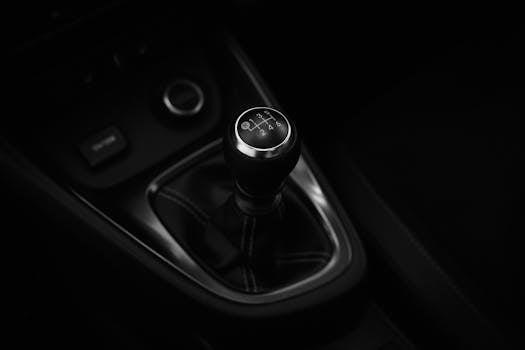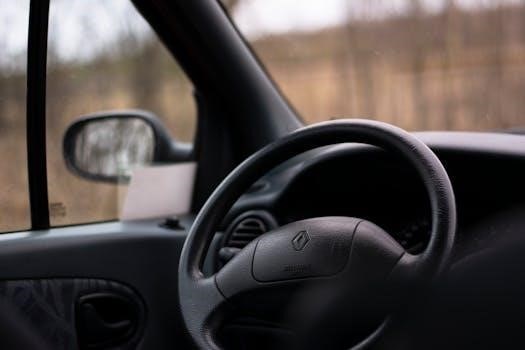DC motor drivers are essential components for controlling the speed and direction of DC motors․ These circuits act as power amplifiers‚ providing the necessary current for operation․ They can be implemented using various integrated circuits or discrete components‚ and are widely used in robotics and industry․
What is a DC Motor Driver?
A DC motor driver is essentially a specialized electronic circuit designed to manage the power delivery to a DC motor․ It acts as an intermediary between a control system‚ such as a microcontroller‚ and the motor itself․ Typically‚ microcontrollers or other logic devices cannot directly supply the current required to operate a motor‚ making a driver circuit necessary․ These circuits function as current amplifiers‚ boosting the control signals to levels sufficient for the motor’s operation․ Furthermore‚ a DC motor driver also offers control over the motor’s direction and speed‚ usually by employing techniques such as pulse width modulation (PWM)․ They also protect the control circuits from back EMF from the motors․ They can be packaged in small modules with integrated functionalities․
Why are DC Motor Drivers Necessary?
DC motor drivers are crucial because microcontrollers and other control devices often cannot provide the necessary current to power a motor directly․ These control circuits are typically designed for low-current logic signals‚ while motors require significantly higher currents to operate effectively․ Connecting a motor directly to a microcontroller output can damage the control circuit due to excessive current draw․ Motor drivers act as a buffer‚ providing the required current while protecting the control circuits․ Additionally‚ motor drivers enable precise control over the motor’s speed and direction‚ features that are typically not available directly from a control system․ They also protect from back EMF generated by the motor during operation‚ thus ensuring the overall reliability of the system․ Therefore‚ motor drivers are essential for safe and efficient motor operation․

Types of DC Motor Drivers
DC motor drivers come in various forms‚ such as H-bridge configurations‚ integrated circuits like the L293D‚ and high-voltage drivers like the IR2110․ Each type offers different capabilities and is suitable for specific applications․
H-Bridge Motor Drivers
H-bridge motor drivers are a popular choice for controlling brushed DC motors․ They utilize four switches‚ typically MOSFETs‚ arranged in an “H” configuration․ By selectively activating these switches‚ the direction of current flow through the motor can be reversed‚ enabling bidirectional control․ This versatile circuit is widely used in robotics and industrial applications․ H-bridges can be implemented with discrete components or integrated into a single chip․ They provide a simple and effective solution for controlling DC motors and are crucial for many motion control systems‚ allowing for both clockwise and counter-clockwise rotation of the motor‚ a very important feature when designing a motor control system‚ they are essential․
L293D Motor Driver IC
The L293D is a quad half-H-bridge motor driver IC‚ designed to control two DC motors or a stepper motor․ It handles up to 600mA per channel‚ with a supply voltage range from 4․5V to 36V․ This popular IC includes built-in flyback diodes for motor protection‚ safeguarding it from back EMF․ The L293D is known for its simplicity and affordability‚ making it ideal for low-power applications such as small robotics projects․ Its ease of use and integrated protection features have contributed to its widespread adoption in hobbyist and educational settings․ It is a very popular option for beginners․
High Voltage Drivers (e․g․‚ IR2110)
High voltage drivers‚ such as the IR2110‚ are specialized integrated circuits designed to control MOSFETs and IGBTs in applications requiring higher operating voltages․ The IR2110‚ for example‚ can handle voltages up to 500V‚ making it suitable for driving powerful motors․ This device integrates both low-side and high-side half-bridge drivers‚ simplifying the design of complex motor control circuits․ These high voltage drivers are critical for applications where higher power and robustness are essential․ They provide the necessary gate drive signals to switch power devices efficiently and reliably․ They are often paired with suitable heatsinks and cooling methods for reliable operation․

H-Bridge Circuit Details
H-bridge circuits are fundamental for DC motor control‚ enabling bidirectional rotation and speed regulation․ These circuits use switches to control current flow through the motor‚ and are widely used in diverse applications․
H-Bridge Operation and Direction Control
The H-bridge circuit is named for its H-shaped configuration of switches‚ typically MOSFETs‚ that control the direction of current flow through a DC motor․ By selectively activating these switches‚ the motor can be made to rotate in either a clockwise or counter-clockwise direction․ When switches Q1 and Q4 are closed‚ and Q2 and Q3 are open‚ current flows through the motor in one direction․ Conversely‚ closing Q2 and Q3 while opening Q1 and Q4 reverses the current flow‚ causing the motor to spin in the opposite way․ This simple yet effective mechanism provides bidirectional motor control for a variety of applications‚ from hobby projects to industrial automation․ Careful control of the switching pattern ensures smooth operation and precise directional control․
PWM Control for Speed Regulation
Pulse Width Modulation (PWM) is a crucial technique for controlling the speed of a DC motor using an H-bridge circuit․ PWM works by rapidly switching the power supply to the motor on and off․ The duty cycle‚ which is the ratio of on-time to the total period‚ determines the average voltage applied to the motor․ A higher duty cycle results in more power and faster speed‚ while a lower duty cycle reduces the power and speed․ This allows for fine-grained speed regulation without losing significant power․ By varying the PWM signal‚ the motor’s speed can be precisely controlled‚ making it an efficient method for motor speed regulation in various applications․ The frequency of the PWM signal must be chosen carefully to ensure proper performance․

Design Considerations for DC Motor Drivers
Designing DC motor drivers requires careful attention to several key factors․ These include implementing dead time to prevent short circuits‚ selecting the appropriate PWM frequency‚ and employing EMI reduction techniques for stable operation․
Dead Time Implementation
Dead time is a crucial aspect of H-bridge design‚ preventing simultaneous conduction of transistors․ This brief period ensures that one switch is fully off before another turns on․ Without it‚ a short circuit could occur‚ leading to voltage loss or damage․ Implementing dead time involves a delay between switching transitions․ The programmer delays the opening of the topmost switch until the bottommost is closed․ This prevents momentary short circuits from occurring․ This careful timing is essential for maintaining circuit integrity and preventing damage to components․ Dead time is also crucial for preventing shoot-through currents which can damage the transistors and reduce efficiency․ Proper dead time implementation is a vital design consideration․
PWM Frequency Selection
Selecting the correct PWM frequency is critical for optimal DC motor driver performance․ Lower frequencies lead to increased power loss‚ while excessively high frequencies may strain the microcontroller․ The microcontroller might struggle to generate the necessary PWM signal‚ and incompatibilities can damage the gate driver․ Furthermore‚ the transistor switches may be incompatible with high frequencies․ The correct PWM frequency should be chosen in the firmware to guarantee proper motor controller functioning․ Proper PWM selection must also consider the physical limitations of the system․ Selecting a frequency that matches the design parameters of the system is essential for reliable operation and efficiency․
EMI Reduction Techniques
Electromagnetic interference (EMI) is a significant concern in DC motor driver circuits‚ especially with brushed DC motors․ The frequent switching of the commutator generates noise that can affect nearby components․ This noise can be transmitted through the air or conducted through wires‚ potentially causing damage․ To mitigate EMI‚ several techniques are employed․ Filters‚ often used to suppress noise at specific frequencies․ Ferrites are also utilized to shield cables that might pick up EMI․ These components act to reduce the effect of these unwanted currents‚ which are particularly concentrated at lower frequencies‚ ensuring a more stable and reliable operation․

Components in DC Motor Drivers
DC motor drivers utilize various components‚ including MOSFETs‚ which are crucial for switching current․ These drivers also incorporate protection circuits against transient voltages‚ ensuring reliable and safe operation of the system․
MOSFET Specifications
When selecting MOSFETs for DC motor driver circuits‚ several specifications are critical․ These include the drain-source voltage (Vds)‚ which must exceed the maximum voltage the motor will experience․ The continuous drain current (Id) rating should be higher than the motor’s peak current draw to prevent overheating and damage․ The on-resistance (Rds(on)) is another important parameter; lower values minimize power losses and heat generation․ Gate threshold voltage (Vgs(th)) determines the voltage required to activate the MOSFET․ Furthermore‚ the switching speed of the MOSFET is also important for efficient operation‚ especially when using pulse width modulation (PWM) for speed control․ Finally‚ thermal resistance should be considered for heatsink design to manage heat dissipation effectively and avoid device failure․
Use of MOSFETs in Series
In DC motor driver circuits‚ MOSFETs are sometimes connected in series to increase the overall current handling capacity․ When MOSFETs are placed in series‚ the total voltage rating is increased because the voltage is divided across the devices‚ allowing operation at higher voltages than a single MOSFET could handle․ However‚ it’s crucial to ensure that the gate voltages are properly balanced so each transistor conducts effectively․ Series configurations are not as common as parallel ones due to increased complexity in gate driving and the need for careful thermal management to avoid any single device from overheating‚ which could lead to the failure of the circuit as a whole․ Furthermore‚ the switching times of each MOSFET must be synchronized to ensure proper operation․
Transient Voltage Protection
Transient voltage protection is a critical aspect of DC motor driver design․ Inductive loads‚ such as DC motors‚ can generate significant voltage spikes when switching‚ potentially damaging the MOSFETs and other driver components․ To mitigate these risks‚ several protection measures are employed․ Transient voltage suppressor (TVS) diodes are often used to clamp excessive voltages․ These diodes limit the maximum voltage by conducting current when a threshold is exceeded․ Additionally‚ a small resistor is typically placed in series with the gate of the MOSFET to limit the current and prevent damage․ Furthermore‚ a fast recovery diode should be placed across the motor terminals to protect the driver from back EMF and to provide a path for the current when the motor is switched off‚ reducing any voltage spikes․
